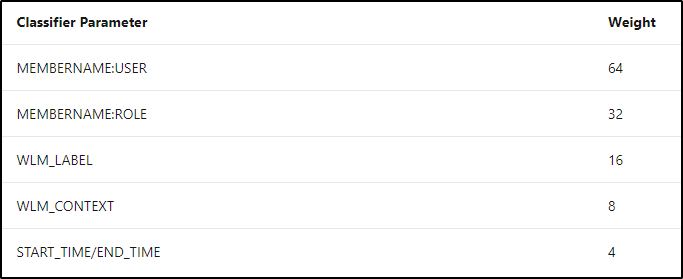Hello @Maitra-v, Anirban ,
Thanks for the question and using MS Q&A platform.
If you have multiple of these classifiers exist for the same user a weighting exercise is performed. The following table represents how the weighting happens.

Dedicated SQL pool workload management in Azure Synapse consists of three high-level concepts: Workload Classification, Workload Importance, and Workload Isolation. These capabilities give you more control over how your workload utilizes system resources.
Workload classification is the concept of assigning a request to a workload group and setting importance levels. Historically, this assignment was done via role membership using sp_addrolemember. This action can now be done via the CREATE WORKLOAD CLASSIFER. The classification capability provides a richer set of options such as label, session, and time to classify requests.
Workload importance influences the order in which a request gets access to resources. On a busy system, a request with higher importance has first access to resources. Importance can also ensure ordered access to locks.
Workload isolation reserves resources for a workload group. Resources reserved in a workload group are held exclusively for that workload group to ensure execution. Workload groups also allow you to define the amount of resources that are assigned per request, much like resource classes do. Workload groups give you the ability to reserve or cap the amount of resources a set of requests can consume. Finally, workload groups are a mechanism to apply rules, such as query timeout, to requests.
For more information, refer to What is workload management? And also check out the detailed video on Workload Management Concepts.
This article explains a bit more on Workload Management in Dedicated SQL Pools with examples of multiple users and groups.
Hope this will help. Please let us know if any further queries.
------------------------------
- Please don't forget to click on
 or upvote
or upvote  button whenever the information provided helps you. Original posters help the community find answers faster by identifying the correct answer. Here is how
button whenever the information provided helps you. Original posters help the community find answers faster by identifying the correct answer. Here is how - Want a reminder to come back and check responses? Here is how to subscribe to a notification
- If you are interested in joining the VM program and help shape the future of Q&A: Here is how you can be part of Q&A Volunteer Moderators
